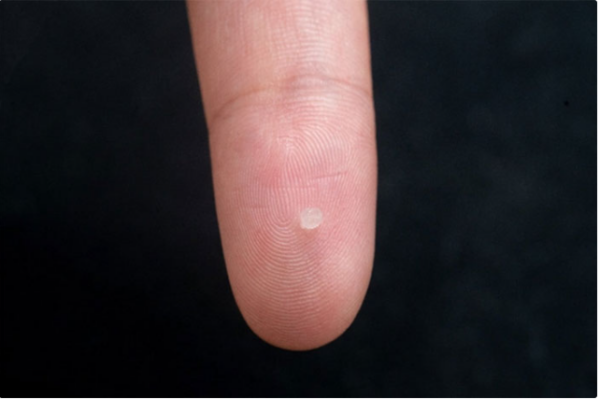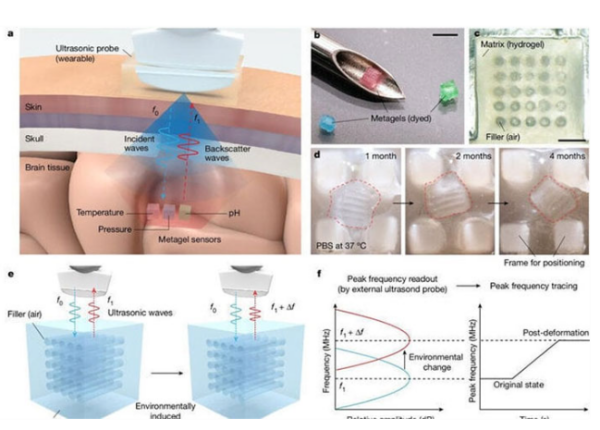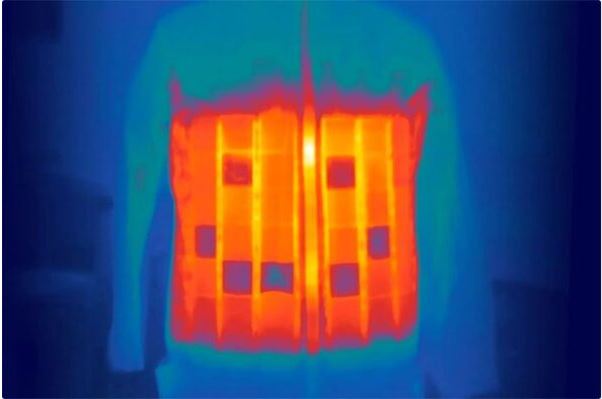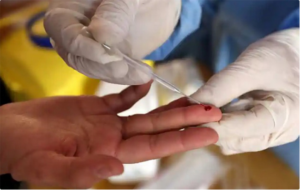According to SCMP, a small sensor just the size of a sesame seed can make progress in monitoring and caring for patients with trauma or brain cancer.
This type of hydrogel-based wireless sensor developed by Chinese scientists is biodegradable and can be injected into the brain to measure temperature, pH, intracranial pressure and blood flow with help of external ultrasonic probe.
Tests show it can make these measurements with even greater accuracy than sensors currently in use.
In comparison to existing research on wireless implantable sensors, our metagel sensor presents distinct advantages, including a smaller implant size, the ability to separate multiple signals, and biodegradability.

The sensor is only the size of a sesame seed. (Photo: Huazhong University of Science and Technology)
Zang Jianfeng, author and professor at Huazhong University of Science and Technology, added: “The injectable metagel ultrasound sensor we invented uses advanced acoustic metamaterial technology and has a size of only 2×2×2 mm, about the same as a sesame seed.
Furthermore, through an external ultrasound probe, it can wirelessly monitor changes in physiological parameters in the brain. When the researchers tested their gel sensor in mice and pigs, they found that it remained stable in the brain for up to a month and completely dissolved after four months.
The wireless design and biodegradability will mean that patients undergoing cancer treatment or brain injuries will no longer need to undergo additional surgeries to remove them. It will also prevent the risk of infection caused by wired clinical probes that are used to transmit data through holes in the scalp, the article said.
Although technology in the industry has gradually advanced toward wireless sensors, the difficulty in clinical application still lies in sensor size, biocompatibility, and communication range.
According to the research team, this sensor is inserted into the intracranial space using a puncture needle. The metagel material then deforms in response to physiological changes in the brain’s environment, causing a change in the peak frequency of the reflected ultrasound wave, which is then wirelessly measured with an external ultrasound probe. to collect data.
The shape of the gel sensor includes small holes or air columns, allowing the external ultrasound probe to record the exact physiological environment inside the brain.

The device can be inserted into the brain with a needle and then dissolved on its own. (Photo: Medical Xpress)
The device can be inserted into the brain with a needle and then dissolved on its own. (Photo: Medical Xpress)
A gel sensor can independently measure a specific parameter such as temperature or pH based on the material it is made from, and multiple gels can be installed at the same time to measure different parameters. The team stated that the gel sensors can be detected by an external ultrasound probe from a distance of over 10 cm, “enabling comprehensive examination of brain tissue.”
The researchers also tested the sensor in mice and pigs by injecting them with wired clinical sensors to compare measurement results. As a result, they found that “Metagel is superior to the transducer for clinical intracranial pressure monitoring in terms of resolution and temporal accuracy.”
The team’s gel sensors begin to dissolve after five weeks, but Zang says they can be specially designed to work for longer periods of time if needed. This person said that because their work focuses on innovating medical devices using soft materials, the team will need to discuss with clinicians before actual operations.
“Compared with existing commercial intracranial pressure sensors, our sensor can significantly reduce patient pain, and we also hope that our research can contribute,” he shared. for everyone’s life and health.”










